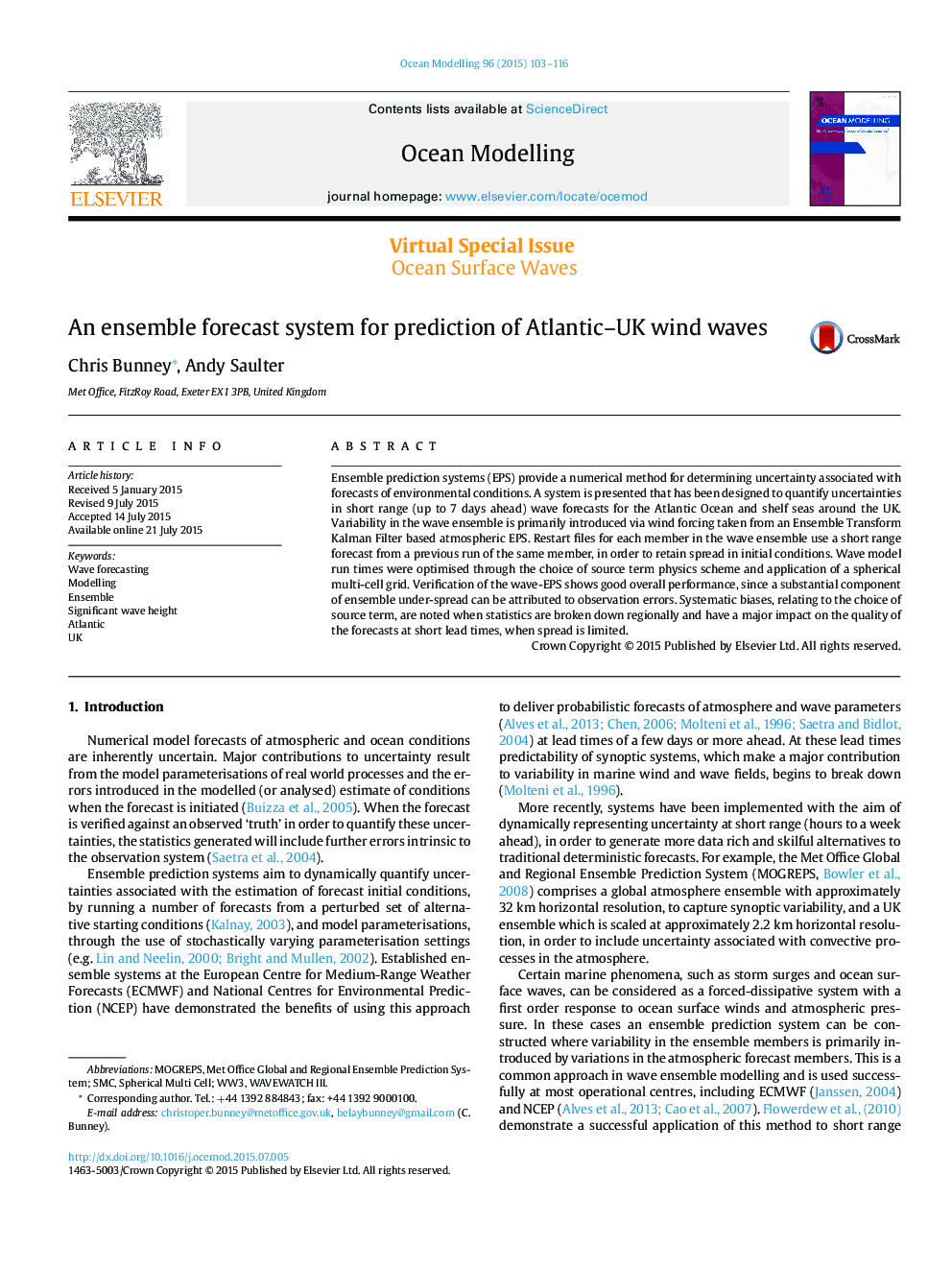| Article ID | Journal | Published Year | Pages | File Type |
|---|---|---|---|---|
| 4552000 | Ocean Modelling | 2015 | 14 Pages |
•A short-range (3 day) 22 member ocean surface wave ensemble prediction system is described.•Forcing is provided by Met Office atmospheric ensemble with wave model initial conditions taken from previous T+6 forecast.•Verification of the wave system is presented using a variety of deterministic and probabilistic metrics.•Overall, system performs very well, but some regional systematic biases are identified that impact on the forecast quality.•Performance improved after application of regional bias correction and when observation errors are accounted for.
Ensemble prediction systems (EPS) provide a numerical method for determining uncertainty associated with forecasts of environmental conditions. A system is presented that has been designed to quantify uncertainties in short range (up to 7 days ahead) wave forecasts for the Atlantic Ocean and shelf seas around the UK. Variability in the wave ensemble is primarily introduced via wind forcing taken from an Ensemble Transform Kalman Filter based atmospheric EPS. Restart files for each member in the wave ensemble use a short range forecast from a previous run of the same member, in order to retain spread in initial conditions. Wave model run times were optimised through the choice of source term physics scheme and application of a spherical multi-cell grid. Verification of the wave-EPS shows good overall performance, since a substantial component of ensemble under-spread can be attributed to observation errors. Systematic biases, relating to the choice of source term, are noted when statistics are broken down regionally and have a major impact on the quality of the forecasts at short lead times, when spread is limited.
